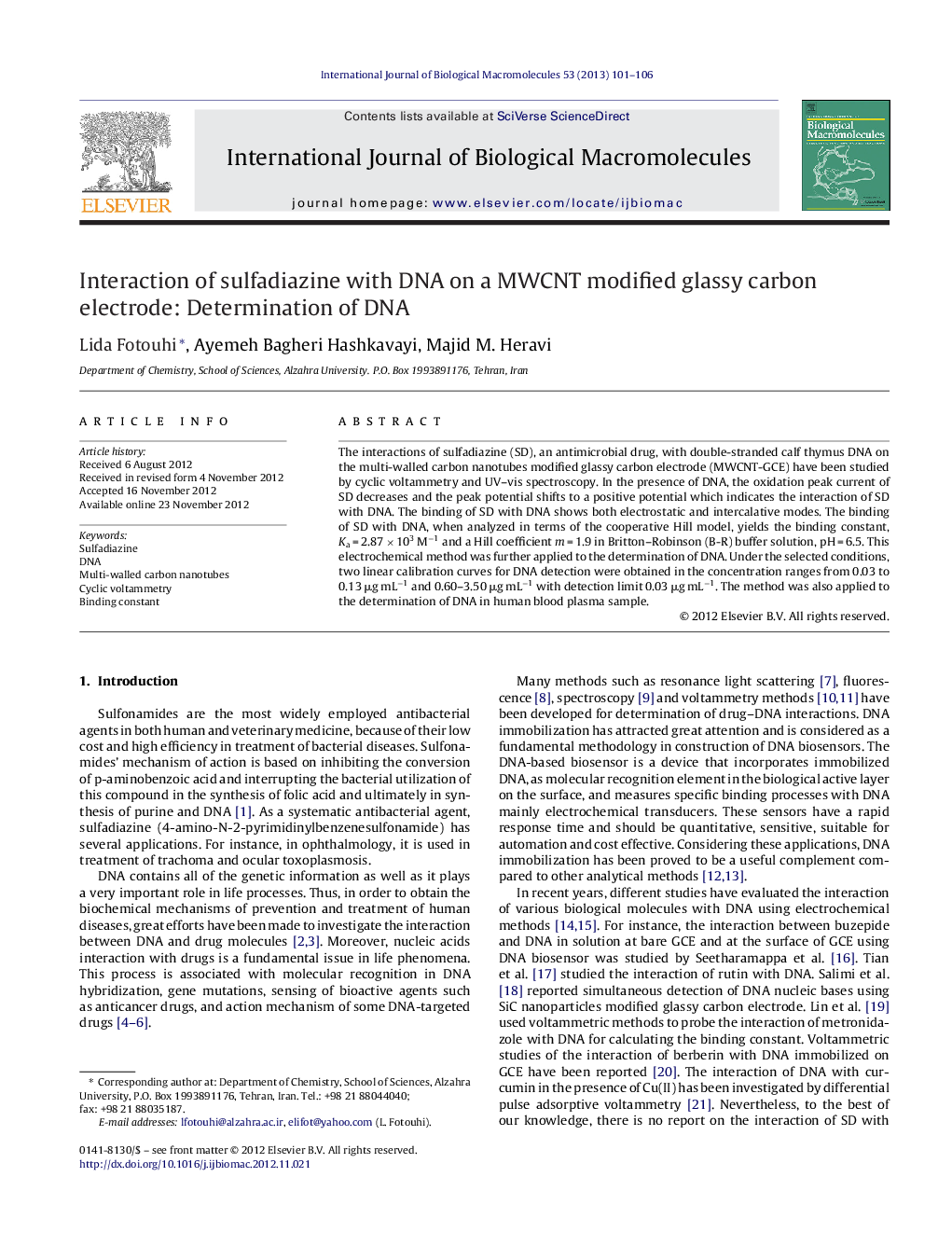| Article ID | Journal | Published Year | Pages | File Type |
|---|---|---|---|---|
| 1987083 | International Journal of Biological Macromolecules | 2013 | 6 Pages |
The interactions of sulfadiazine (SD), an antimicrobial drug, with double-stranded calf thymus DNA on the multi-walled carbon nanotubes modified glassy carbon electrode (MWCNT-GCE) have been studied by cyclic voltammetry and UV–vis spectroscopy. In the presence of DNA, the oxidation peak current of SD decreases and the peak potential shifts to a positive potential which indicates the interaction of SD with DNA. The binding of SD with DNA shows both electrostatic and intercalative modes. The binding of SD with DNA, when analyzed in terms of the cooperative Hill model, yields the binding constant, Ka = 2.87 × 103 M−1 and a Hill coefficient m = 1.9 in Britton–Robinson (B-R) buffer solution, pH = 6.5. This electrochemical method was further applied to the determination of DNA. Under the selected conditions, two linear calibration curves for DNA detection were obtained in the concentration ranges from 0.03 to 0.13 μg mL−1 and 0.60–3.50 μg mL−1 with detection limit 0.03 μg mL−1. The method was also applied to the determination of DNA in human blood plasma sample.
